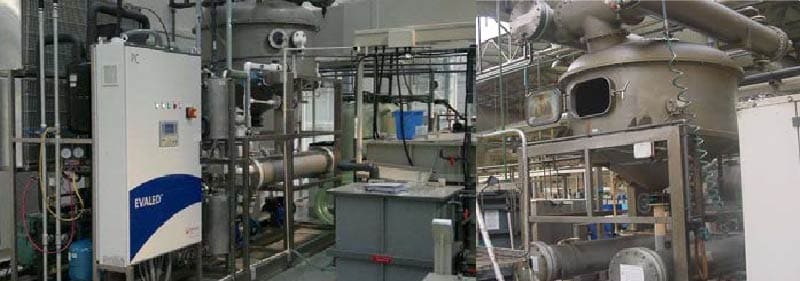Chrome Plating Process Achieves Cost Reduction Through Zero Liquid Discharge
CHALLENGE
A global manufacturer of automotive components was faced with rising costs related to waste disposal from a Chrome plating process used in a plant in Poland. The plant manufactures shock absorbers for passenger vehicles. The plating of the shocks adds corrosion resistance, increased surface hardness, and improves cleaning ability and overall appearance.
INDUSTRY
Automotive Manufacturing
PRODUCTS UTILIZED
Evaled® Heat Pump Evaporator

Download PDF
Project Goals:
1) Reduce waste disposal costs
2) Reuse the chromium oxide back in the working bath
3) Provide materials of construction (MOC) suitable to handle aggressive chromic acid without corrosion issues
Process Diagram

Plant Analysis
Parameters
Unit
Waste In
Distillate Out
Concentrate Out
Condutivity
μS/cm
<25000
<200
–
Cr6+
g/L
3.5 – 5
<0.02
30
Technology Type
Material
Footprint (ft2)
PC Forced Circulation E 6000 KT
Heat exchanger: Silicon carbide and PVDF Boiling vessel and other wetted parts: Austenitic stainless steel coated with ECTFE
88.26
Results

Distillate Recovered
~ 90%
Concentration Factor
~ 10x
- Complete Zero Liquid Discharge, waste water reduction 100%
- Concentrate recycled to the chromium bath (Bath concentration adjusted by adding either chromic anhydride or demineralized water)
- Galvanic line OPEX reduction




